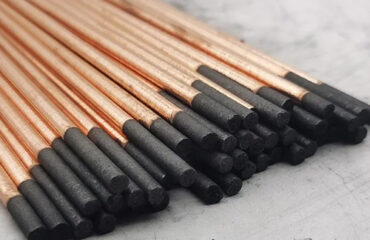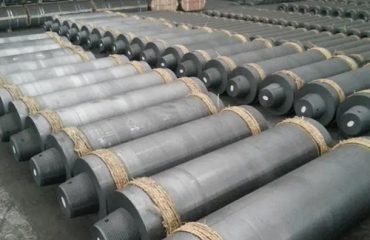This is a Coke for the tomb material, asphalt as a viscous Luo agent, the addition of pore-making agent method, that is, Coke (base material) + NaCl (pore-making agent) + medium-temperature Asphalt (binder), according to a certain proportion of hot mix, rolling, cooling and then broken. The method of making foamed graphite by milling, pressing type, roasting, graphitization and other processes.
This method of making foamed graphite anode plate is basically the same as that of ordinary cold pressing graphite products. The difference is that in the roasting process, when the pore-making agent NaCl melts, the local migration and redistribution of particles, product volume contraction, in the process of graphitization, NaCl gas escape, accompanied by the sharp contraction of product volume, The substrate particles are rearranged and finally formed into a foamed graphite plate. The reordering of the substrate particles still retains the traces of NaCl after being browsed in varying degrees.
The principle of choosing foamed graphite base material is that the strength is high and the volume is reduced after graphitization, and the composition of each group is even. Many pore-making agents can be used, such as NaCl, NaF, NH4Cl, H2C03, FeCl3, sawdust, etc. This paper introduces the application of NaCl in the foamed graphite. The reason is that the curing temperature of binder asphalt is $number ~ 600T, the melting point of NaCl is 801, especially, the boiling point is 1414T, in the asphalt curing temperature range, not volatile, not branded, products of the pore size is easy to control, and the source of NaCl widely, the price is low.
The foam graphite plate produced by this method is different from the total pore rate, the maximum pore diameter and the pore size of the foamed graphite, because of the difference of raw materials and process parameters. The pore size of the substrate and the size of the pore-making agent has a great relationship. The maximum and minimum particle size range of the base material and the maximum size range of the pore-making agent directly affect the pore size range of the foamed graphite.
When pressed, the particle size of the powder has an effect on the porosity, but it is not as good as the grain size of the raw material. Molding pressure also has an impact, practical experience shows that in order to produce a large porosity of cold pressure products, reducing pressure is also one of the effective measures, but with the pressure reduction, the strength of the product also decreases. In a word, the main factors affecting the total pore rate and pore size distribution of foamed graphite products are:
1) The type, granularity and purity of the base material:
2) The type, performance and maximum grain size of pore-making agent;
3) The degree of dispersion of the base material and the pore-making agent and the redistribution of the pore-making agent in the base material during subsequent heat treatment;
4) The shrinkage size of the base material after high temperature treatment;
5) Product volume changes caused by shrinkage of products;
6) Molding method and molding pressure;
7) Other parameters of the intermediate process.
The slight difference among these factors will result in different results for the final performance of the foamed graphite plate. For example, in the method of making foamed graphite with NaCl as pore-making agent, in order to control the aperture range of the product properly, the granularity and purity of the base material must be strictly controlled, and the maximum grain size of NaCl must be controlled.
As the foam graphite plate is mostly used as filter material (molecular sieve, etc.) and adsorption material, the requirements for the aperture range of the product are often narrow, so the substrate and NaCl must be screened to control its size range, which narrows the range of the final product’s aperture. In order to increase the total hole rate, the content of pore-making agent can be increased.


